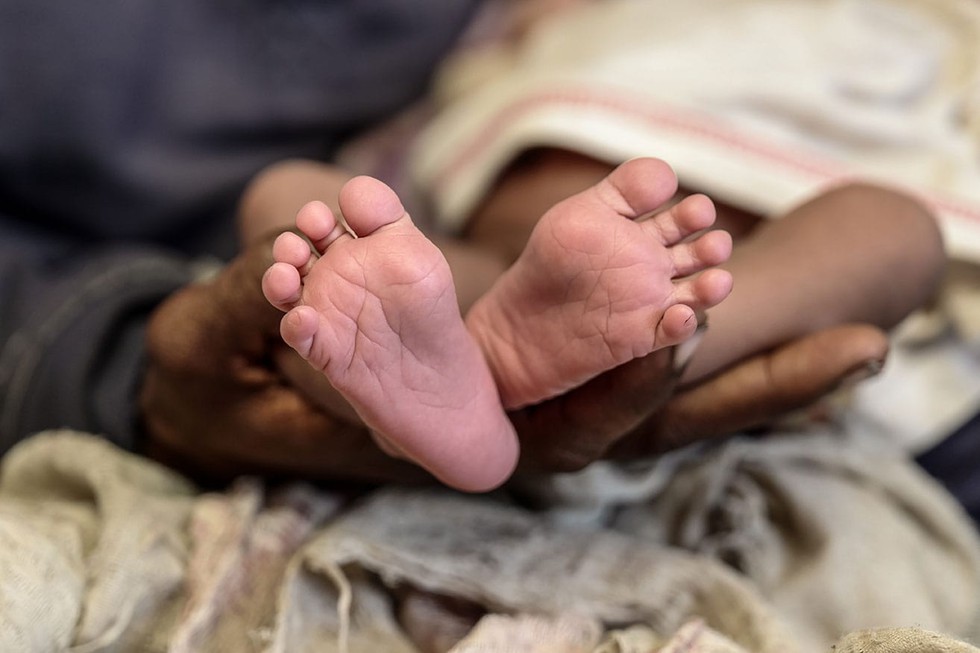
Trends in Maternal Mortality 2000-2023 Report

08.04.2025
Trends in Maternal Mortality 2000-2023 Report
|
For Prelims: About Trends in Maternal Mortality 2000-2023 Report, Highlights of the Report |
Why in the news?
In 2023, India accounted for the second highest maternal deaths globally, tied with the Democratic Republic of Congo (DRC) with 19,000 and second only to Nigeria, according to the Trends in Maternal Mortality 2000-2023 report released recently.
About Trends in Maternal Mortality 2000-2023 Report:
- It is a new report from the United Nations Maternal Mortality Estimation Inter-Agency Group (MMEIG), comprising WHO, UNICEF, UNFPA, the World Bank Group, and the UN Department of Economic and Social Affairs (UNDESA/population division).
- It presents the most up-to-date, internationally comparable estimates of maternal deaths at global, regional, and country levels.
Highlights of the Report:
- In 2023, an estimated 260,000 maternal deaths occurred worldwide, equivalent to 712 deaths each day.
- This marks a 40% reduction in maternal mortality since 2000, reflecting sustained global efforts to improve access to essential health services.
- For the first time, no country was estimated to have an extremely high maternal mortality ratio (MMR), and no region was classified as having a very high MMR.
- Despite these gains, disparities remain stark. Sub-Saharan Africa accounted for 70% of global maternal deaths, with Central and Southern Asia contributing nearly 17%.
- In 2023, 37 countries were classified as being in conflict or experiencing institutional or social fragility, yet they accounted for 64% of global maternal deaths.
- Nigeria had the highest number of maternal deaths and accounted for more than a quarter (28.7 percent) of all estimated global maternal deaths in 2023, with approximately 75,000 deaths.
- Only three other countries had more than 10,000 maternal deaths in 2023—India, the Democratic Republic of the Congo, and Pakistan (11,000).
- India and DRC accounted for 7.2 percent each, while Pakistan accounted for 4.1 percent of global maternal deaths.
- Together, these four countries accounted for almost half (47 percent) of all maternal deaths globally in 2023.
- China, the only other country on the planet comparable to India by population, registered just 1,400 maternal deaths in 2023.
- The statistics reveal that India’s MMR—or the rate at which women per lakh die due to childbirth or pregnancy-related issues—was 362 in 2000 and came down to 80 in 2023, marking a decline of 78 percent over the period.
- The report also provides the first global account of the COVID-19 pandemic’s impact on maternal survival.
- In 2021, when the second wave of COVID was at its peak in most parts of the world, an estimated 40,000 more women died due to pregnancy or childbirth, taking the total number of deaths that year to 3,22,000 from 282,000 the previous year.
- Haemorrhage is a direct obstetric cause of death and remains the leading cause of maternal mortality globally.
Source: The Print
Consider the following statements regarding Trends in Maternal Mortality 2000-2023 Report, recently seen in the news:
Statement-I: There is a 40% reduction in global maternal mortality since 2000, reflecting sustained global efforts to improve access to essential health services.
Statement-II: India had the highest number of maternal deaths and accounted for more than a quarter of all estimated global maternal deaths in 2023.
Which one of the following is correct in respect of the above statements?
A.Both Statement-I and Statement-II are correct, and Statement-II is the correct explanation for Statement-I.
B.Both Statement-I and Statement-II are correct, and Statement-II is not the correct explanation for Statement-I.
C.Statement-I is correct, but Statement-II is incorrect.
D.Statement-I is incorrect, but Statement-II is correct.
Answer C